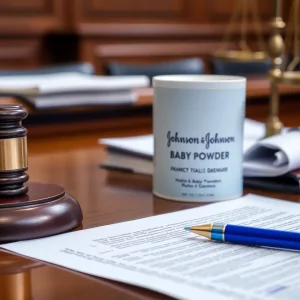North Charleston Police Department Hires Opioid Prevention Coordinator
Navigating her way along Rivers Avenue and Dorchester Road, Shelby Joffrion, North Charleston Police Department’s first opioid prevention coordinator, is on a mission. In her unassuming city-owned Chevy, adorned with “Navigate for Narcan” magnets, Joffrion reaches out to hand out Narcan, a life-saving drug used to reverse opioid overdoses, to anybody in need, no questions asked. This ground-level outreach is a key part of her newly assigned role to oversee opioid training for law enforcement officers and spearhead community education efforts aimed at curbing the deadly trend of overdoses.
Joffrion, who formerly worked as an opioid prevention coordinator with the Charleston Police Department, understands the power of treating people with dignity. “I talk to people like they’re people, give them that respect and listen,” she said. “And get Narcan out there.”
Narcan Distribution and Impact
Administered as a nasal spray, Narcan, or Naloxone, is designed to swiftly counteract the lethal effects of opioid-based drugs, which include heroin, fentanyl, and prescription opioids, according to the Centers for Disease Control and Prevention. Joffrion has attested to the effectiveness of Narcan distribution as the most successful initiative combatting the local opioid crisis. There’s even a QR coded magnet on her car which citizens can scan to text Joffrion and have Narcan delivered to their doorstep.
Fighting the Rising Opioid Crisis
Despite only having been with the department for approximately two months, Joffrion has hit the ground running, utilizing previous experience building up the overdose prevention program at the Charleston Police Department. Her transition to this role was driven by a desire to replicate successful programs like the one in Charleston across the tri-county region and to foster cross-agency collaborations.
Opioid overdoses in North Charleston cut across all lines, affecting individuals from all socio-economic and racial backgrounds. In the first half of this year alone, the city witnessed 120 suspected overdoses, which included 25 deaths. The first week of August also brought about a significant scare with the reporting of a spike in opioid overdoses in Charleston County, which is defined as a minimum of five overdoses reported within a 24-hour period, prompting immediate ramp-ups of prevention efforts.
Data Analysis and Opinion
Unsurprisingly, the surge in opioid overdoses is not a local phenomenon but is mirrored nationwide. The escalation in opioid overdoses, slightly exacerbated by the COVID-19 pandemic, has experienced a sustained increase in occurrences by five to seven percent over the past few years, according to Joffrion. Data from the Charleston County Coroner’s Office from 2023 recorded 233 accidental drug-related deaths that year, up from the 220 overdose deaths reported in Charleston County by the state’s Department of Public Health in 2022.
Prevention and Collaboration Efforts
In an effort to contain the rising tide of drug overdoses, local law enforcement agencies, including North Charleston, have adopted the Critical Incident Management System. This enables these departments to share time-critical information, derived from police reports, regarding overdoses across jurisdictional lines. This collaborative approach allows cross-referencing of data to identify trends, hotspots, and repeated cases, thereby providing a framework for effective interventions.
However, the system has its current limitations and blind spots. While it can record data from reported incidents involving the police, it may not capture instances where police were not involved, or when emergencies are responded to by the fire department or EMS.
Handling Sensitivities
While Joffrion relentlessly disseminates necessary overdose information, undertakes community outreach, and provides representation at various community gatherings and schools, she is also a valuable resource for the police department’s officers. Joffrion offers appropriate and up-to-date training, ensuring that officers are armed with current best practices on how to engage with individuals with a history of opioid usage. “Whether it’s sensitivity training or Narcan training, whatever the current recommendation is for our officers to be the best equipped,” Joffrion stated.
It is Joffrion’s ardent belief that reducing stigmatization and bolstering prevention attempts are the keys to effectively combatting the opioid crisis. This marks the beginning of North Charleston’s dedicated and proactive response to the opioid crisis, a much-needed effort in these challenging times.



























